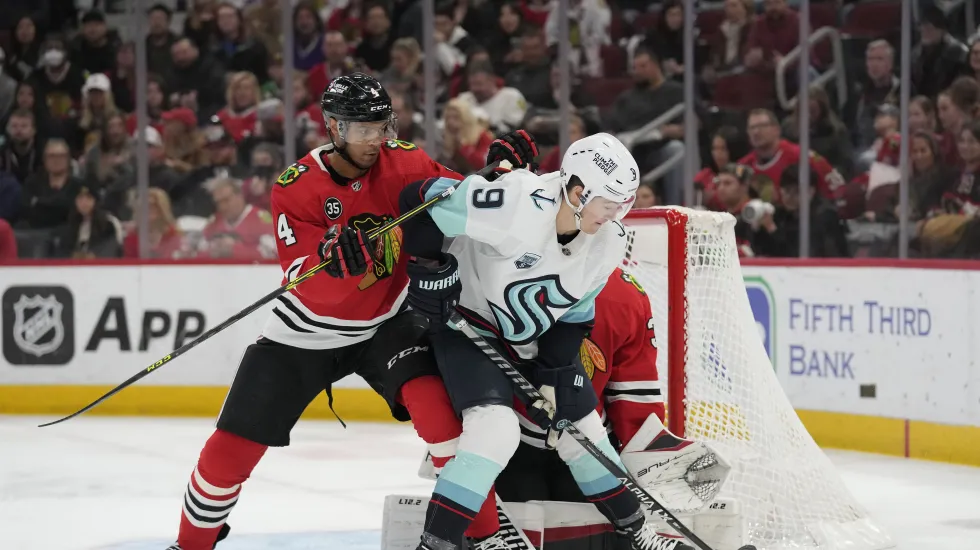
Derek King’s willingness to make in-season changes to the Blackhawks schemes he inherited from Jeremy Colliton has varied by zone.
In the offensive zone, King — after receiving feedback from his players — made a slight tactical change in February to allow defensemen to pinch more aggressively, hoping to keep more possessions alive by holding pucks in along the boards. The Hawks’ third forward (their “F3”) moves higher in the zone in those situations to protect against counterattacks.
In the neutral zone, the Hawks had switched to a 1-2-2 trap shortly before Colliton’s demise, and King — despite entering with no previous familiarity with it — kept it so the players wouldn’t have to readjust again. King said Tuesday he might change the neutral-zone system if brought back as permanent coach next season.
In the defensive zone, King’s adjustments have been the most significant. He instructed the Hawks to abandon the hybrid man-on-man structure Colliton swore by and to instead shift to more of a zone, with the two defensemen focusing on locking down the slot and the forwards defending out from there.
Sticking to that conservative structure and maintaining consistently stout defensive coverage, though, has proven to be easier said than done. The Hawks’ coverage has been particularly shoddy in recent weeks.
“Sometimes in the ‘D’-zone, you’re close to a guy and he’s moving up the boards, and you feel you have to stay with them instead of taking them so far and then switching them off to the forward,” King said Tuesday. “That’s the way they were doing it with Jeremy. They could keep their more man-on-man type of ‘D’-zone [system], chase their guy up and stay with him.
“We don’t want that. We want defensemen staying in front. We don’t want forwards standing and trying to play defense in front of our goalie. So let [the forwards] take care of all the stuff past the hash marks, and our ‘D’ will protect the front of the net.”
The zone defense, and the accompanying defenseman-to-forward (and vice versa) marking switches, inherently require more communication than Colliton’s man-on-man hybrid defense did. And that communication has also been a challenge for the Hawks during all this instability.
“If you’re not sure, communicate,” Seth Jones explained recently. “The guy on the puck needs to be assertive that he’s on the puck-carrier and then talk from there. Sometimes we get mixed up with switches and things like that.”
Jones said he has noticed “three-high” or even “four-high” offensive-zone schemes, with therefore only one or two offensive players situated down low or around the crease, becoming increasingly common in recent years. That system allows for more “free-roaming” puck and player movement, which “can be confusing” to defend.
The Kraken, for example, have adopted a “three-high” system in their first season of existence, and they frustrated the Hawks with it last Thursday.
Starting with Tuesday’s matchup against the Kings, however, King overhauled the Hawks’ defensive pairings — much like he did with the forward lines last weekend — hoping the refresh will improve the defensive coverage and results over the final weeks.
Jake McCabe notably moved back to his natural left side on a pairing with Alec Regula, who has been dominating the AHL recently and was recalled to provide a much-needed second right-handed shot. McCabe has been especially mistake-prone lately but King attributed that partially to an illness McCabe has been playing through.
Seth Jones was officially paired with Alex Vlasic, although he rotated around as usual, and Riley Stillman and Caleb Jones formed the new third pairing. Calvin de Haan, hampered by some “lower-body pains,” and Erik Gustafsson were scratched.
“We’ll just keep watching them and keep in their ear and help them out,” King said. “It’s alright to make mistakes; just make honest ones.”







